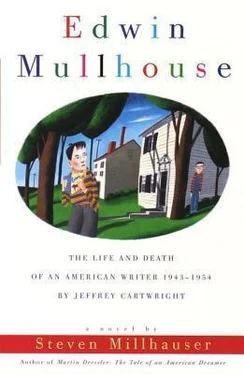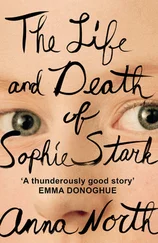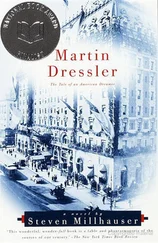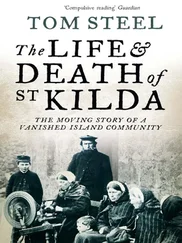The bulk of each issue (not counting the last seven) is taken up by snippets of family news, generally no more than half a column in length and often much shorter; representative headlines are EDWIN PLAYS THE PIANO, FATHER SMOKES CIGAR, KAREN GOES TO NURSERY SCHOOL, NANNY BUYS A NEW COAT, EDWIN BROKE HIS WATCH BAND, MOTHER DROPS GLASS. In addition to the family news are items such as weather reports, lists of imaginary television programs, ridiculous baseball scores (CONNECTICUT 10, YANKS 7 AND ½), carefully numbered crossword puzzles without definitions, meaningless cartoon strips with stick figures and empty bubbles, pencil sketches representing photographs and signed PICTURES, INC., and a column called EDWIN’S BELIEVE IT OR NOT, in which he wrote down any old rubbish, such as IN CHINA PEOPLE HAVE 3 HEADS. A boy’s magazine that Edwin had been getting since Christmas supplied him with riddles (WHY ARE WOLVES LIKE PLAYING CARDS? ANSWER ON PAGE 2), jokes (FIRST CANNIBAL: WHAT’S THAT BOOK YOU’RE READING? SECOND CANNIBAL: IT’S CALLED HOW TO SERVE YOUR FELLOW MAN), and doodles (a bear climbing a tree, the neck of a giraffe going past a window, a fat man taking a bath, a trombone player in a telephone booth, two elephants’ tails tied together, a fat lady diving, a tall man in a short elevator, a birdseye view of a boxing match, a checkerboard for midgets, a black cat at midnight). All of this trash, trivial and repulsive though it may be, is nevertheless of no small interest as evidence of the diverse influences upon Edwin’s imagination, evidence which the biographer ignores at his own peril. For it is in this setting, like butterflies in a vacant lot, that Edwin’s earliest stories appear.
Because they both belong to a pack.
The five weekly issues and the first twelve daily issues each contain a single story, from one to two columns in length. The last seven issues contain two stories apiece, which become longer and longer until the last two issues consist entirely of fiction. Altogether Edwin wrote thirty-one stories (fourteen in the last week), ranging in length from 89 words to 432 words. The transformation of a journal of fact into a journal of fiction is an event of major significance in the spiritual history of my artistic friend. The stories themselves are of little or no significance, except insofar as they reveal the form and content of Edwin’s imagination, approximately one year before he was to begin his immortal novel. The shortness of even the longest stories forced upon Edwin a succinctness that at its worst is mere summary and at its best suggests dimly, very dimly, certain fairy tales. The style is uniformly unremarkable, imitated from various storybooks for children; occasionally Edwin introduces a large word for no purpose except display. A typical story begins:
Once upon a time there
was an ugly princess.
Her name was Glug. Every
body hated this ugly pri
ncess. One day she was
playing in the forest and
she saw a beautiful frog.
His name was Thomas.
He had two brown eyes and a
beautiful green skin. S
uddenly, [etc.]
The difference between the hasty dashed-off simplicities of this so-called style and the intricate simplicities of his final manner is roughly comparable to the difference between a dull handful of colored glass chips and their scintillating six-sided kaleidoscopic transformation. Since, however, the subjects of the stories possess a certain interest as imaginative information, I shall summarize them briefly in the order of composition, allowing the reader to arrange this mass of stuff in some more meaningful order if he can. Here, then, are the thirty-one stories of Edwin’s Middle Years — and let us hope that no dull-witted disciple, in some future spasm of misguided fervor, will ever hunt up the originals in order to display their crudities to the public eye.
1–5. Uninspired tales centering upon Donald Duck (“Donald and the Witch,” “Donald Goes to the Moon,” “Donald and the Flying Carpet,” “Donald Meets Edwin,” “Donald and the Wizard of Oz”). In “Donald Meets Edwin,” the most interesting story of this group, Edwin is presented as reading a comic book from which Donald emerges one night. The theme of creatures stepping out of books or off walls or out of dreams is a favorite with Edwin and has evident affinities with the last pages of The Lonely Island.
6. The adventures of a dog called Grrr who is buried alive. One day Grrr feels the ground give way under him and begins to fall down a deep tunnel until he hits a door. The door opens and he falls onto a vast hand. The hand closes over him (there is an interesting description of the rising fingers) and he soon finds himself in a dark pocket in the company of an elephant and a dinosaur. Finally he ends up on a sunny shelf beside another dog, and they all live happily ever after (Edwin was partial to happy endings).
7. A ridiculous fable about a hungry boy who sails to an island where the people are made of licorice. He bites off the king’s finger and is pursued. He hides in a hill of raisins but eats so many that he is soon discovered; he dives into a lake of root beer but drinks it dry; he hides in a chocolate tree but eats all the M & M leaves. Finally he enters a chocolate-cake mountain, eats away the foundation, and is killed. Moral: DON’T EAT BETWEEN MEALS.
8. “Pillow and Sam.” The first of a series of dream-tales whose heroes are a boy called Sam and a pillow called Pillow. Sad and lonely by day, Pillow is happy only at night, when he and Sam go on adventures together. In this episode, Pillow and Sam follow a black cat into the woods. The cat leads them to a house. Pillow and Sam enter the house and are seized by a witch, who ties them up and places them in the fireplace. She lights a match; the flame gets brighter and brighter; the witch begins to resemble a window with venetian blinds; Pillow and Sam wake up.
9. A not very funny story about a donkey called J.
10. An amusing story about a wave who runs away from the ocean and goes to live in a city. Unable to make friends because he makes everyone wet, he eventually wanders into a house, where a horrified lady, whose rug he ruins, calls the police. The police try to capture him but he slips through their fingers. Finally he leaps into a sink, disappears down the drain, and returns to the ocean, where he lives happily ever after.
11. A story inspired by my goldfish bowl, into which Edwin gazed for one hour. A boy standing on the seashore meets a green lady who takes him by the hand and leads him into the ocean. After a while they come to a stone house. The green lady turns to stone. The boy looks at his hands and sees that they are changing to scales. He tries to escape but comes to a glass wall. The story ends with the words TO BE CONT’D but was never cont’d.
12. “Donald and the Invisible Hand.” A disappointing return to an early genre.
13–15. Further adventures of Pillow and Sam. In each tale, a dangerous situation is resolved by waking.
16. A story about the letter l, who is sad because he is the thinnest letter in the alphabet. One day he is chased home from school by o. His father, L , finding him in tears, explains to him that letters are not important by themselves but only as parts of words. He is part of “elephant,” “eagle,” and “whale,” while o is part of “worm,” “hog,” and “toad.”
17–18. More Donald stories. The strain is beginning to tell.
19. A sentimental tale about a little blind girl called Ann and her brother Dan. As they cross a bridge, Ann falls into the water and calls for help; smiling, Dan walks on. Ann drowns. In the last sentence we learn that little Dan is deaf, poor fellow.
20. A continuation of The Pied Piper of Hamelin. Once inside the hill, the Pied Piper reveals to the children that he is going to eat them. The children begin to pray. As they pray, their shapes change slowly, wings appear on their long green bodies, and they fly out through a small opening in the hilltop. The children of Hamelin may still be seen today, for they are praying mantises.
Читать дальше












